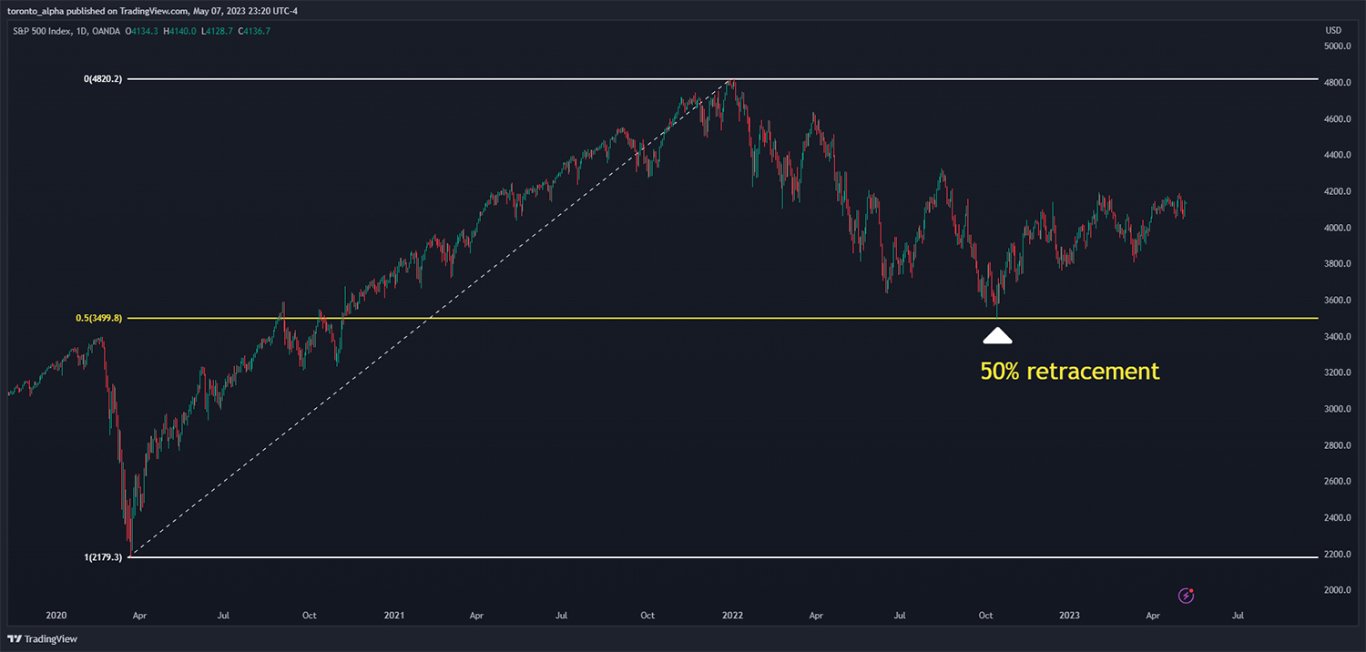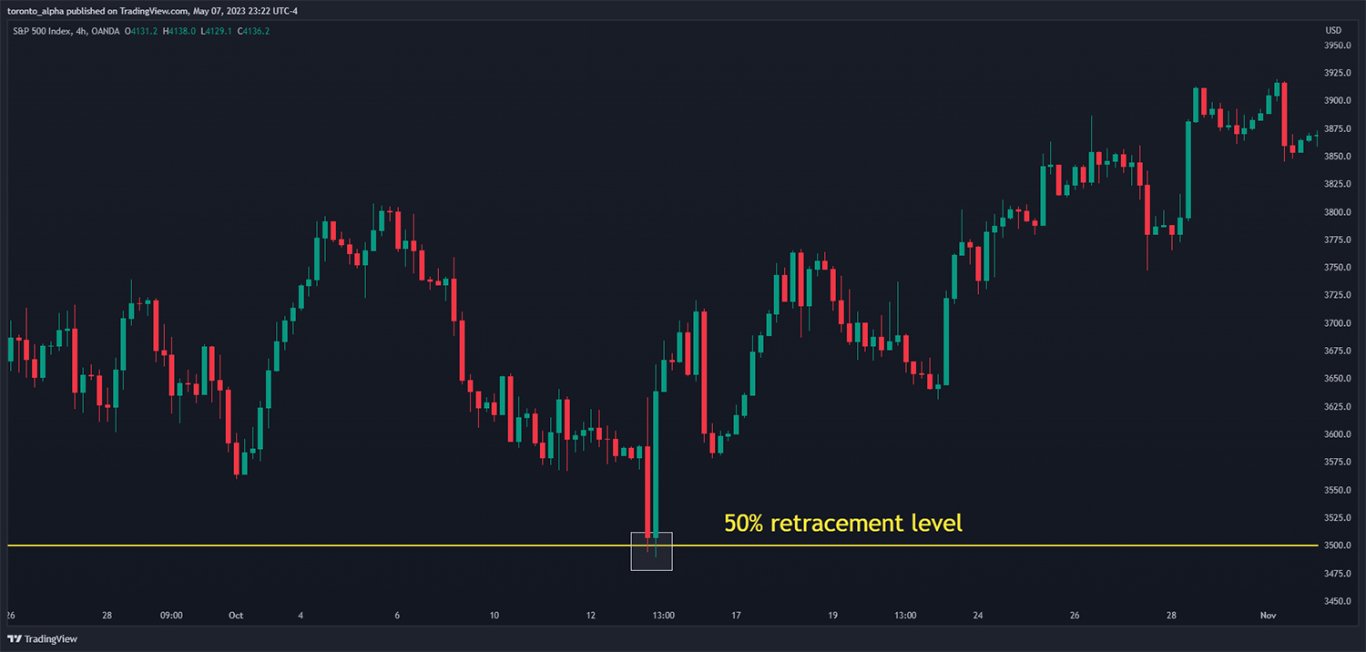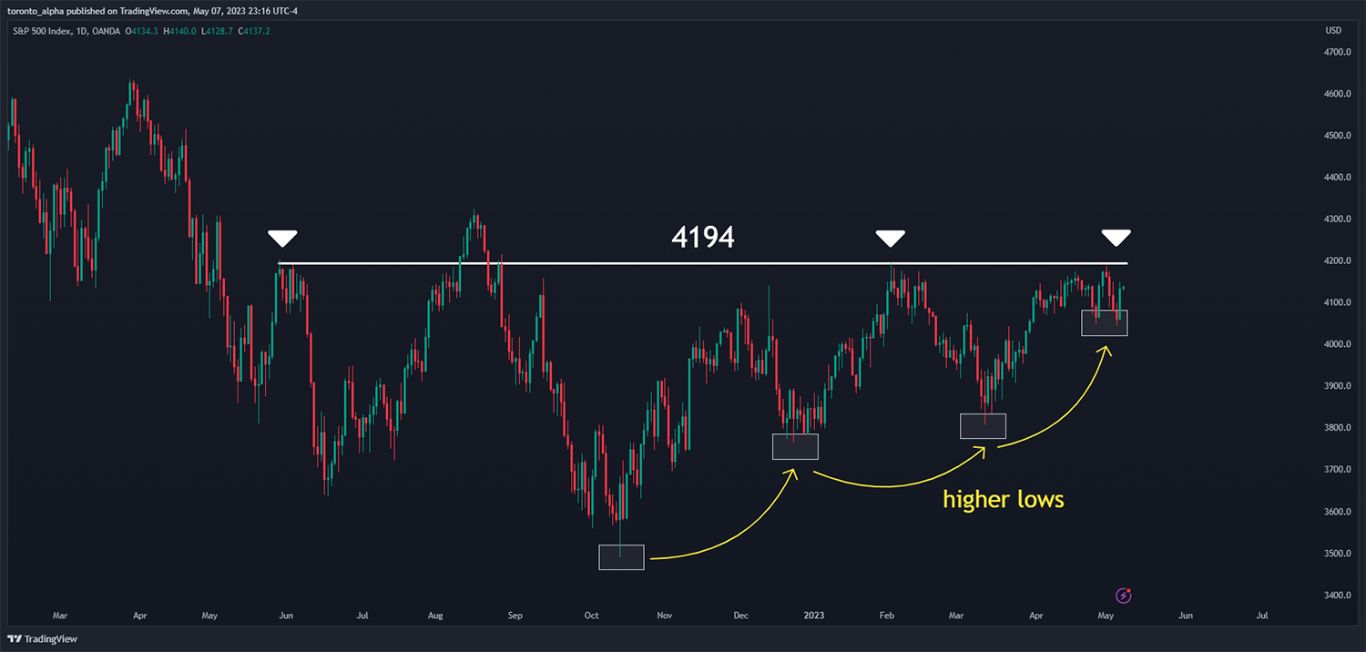The world’s leading equity index, the S&P 500, has shown surprising robustness in the face of a hostile environment: geopolitical uncertainty, supply chain realignments, protectionism with China, and the ultimate market killer, high inflation followed by high-interest rates.
The market initially suffered: 2020-2022 saw a period of simultaneous falling equities and bonds—the two are so often inversely correlated that we have not seen equities and bonds fall simultaneously in over thirty years.
But in 2023, the S&P 500 seems to have shed the previous years’ bearishness with the ease of putting away a raincoat after a rainfall.
The 50% level
I entered my first long trade on the S&P 500 since 2020’s bearishness when the price level bounced precisely off a 50% retracement level from the low in March 2020 to the all-time high in January 2022.

The bounce was so incredibly perfect that it touched the level on a 4-hour chart with just a couple of candles, almost to the exact point. That’s a big deal, given that this 50% level is visible on the daily and weekly charts.

Why is the 50% level important? I believe the 50% level is more valid than any other retracement level because humans are very adept at perceiving halfway points between distances and using them to plan their actions. Markets reflect human behaviour, and it’s no surprise that price will react at this level. In my trading, I only look for this 50% retracement level now, and I don’t even bother with the traditional 61.8% Fibonacci (Golden Ratio) level.
Since that 50% bounce, the price has made a series of higher lows and is recently bumping against a resistance level of approximately 4194.

If the price breaks 4194 and forms a support level at this previous resistance level, it provides an excellent entry for a new long position. (I’d look for that resistance turning to support on a lower timeframe, 1-hour or 4-hour chart).
Let’s see how this unfolds!
Ready to trade our daily Forex analysis? We’ve made this forex brokers list for you to check out.
